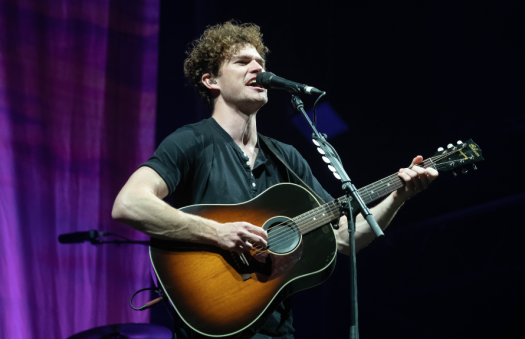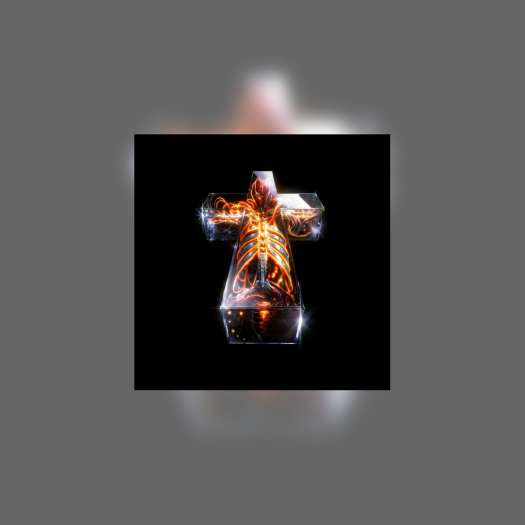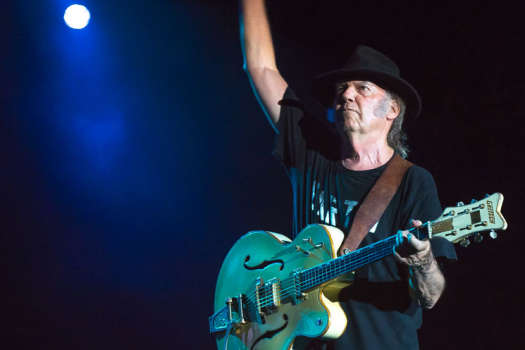The term Latin music, like world music, attempts to segment one market of music from a wide variety of cultures. Different Latin American cultures have profoundly influenced American popular music for decades. There have been three main centres of Latin culture in America: the profoundly Cuban influence in Miami, the Mexican influence in the Southwest, particularly California, and the melting pot of Cubans, Puerto Ricans and all Latin American nations in New York.
Latin Dance
The mambo was the first post-war Latin dance craze, and no one did it better than Tito Puente his timbale work seemed to turn time around, yet still stay in the groove. In New York, Puerto Rican and Cuban rhythms gained in popularity during the 1950s and 60s. The Fania label became synonymous with Latin music by the 70s and "salsa" appeared as a catch-all term for diverse Afro-Cuban styles. The percussion sounds of the Roland TR808 contributed to freestyle, which crossed over into the clubs and pop charts. Masters at Work have epitomised a Latin perspective on house music for more than ten years. Band-based recordings continue to grow in popularity along with nation-wide salsa dancing classes. Merengue, from the Dominican Republic, was the dominant rhythm of the 1990s.
Starters: Tipica 73 Salsa Encendida (Inca, 1978); Ruben Blades Siembra (Fania, 1977); Various New Latinaires Vol. 1, 2, 3 (Ubiquity, 1998, 99)

Tito Puente
Latin Soul
New York's neighbourhoods have always represented when it comes Latin soul. The boogaloo craze of the mid-'60s was spawned by Ray Barretto's soul-informed music. Joe Bataan achieved R&B radio airplay with Curtis Mayfield covers. In the 70s, the fusion became even more pronounced, with Pucho and Harlem River Drive laying down deep funk grooves. One outcome of this fusion was disco, especially of the Philadelphian variety. The logical successor the soul impulse are Latin rappers, beginning with Mean Machine's "Disco Dreams" in 1981. Latin rappers such as Cypress Hill and Funkdoobiest have worked fully in the medium of hip-hop.
Starters: Ray Barretto Acid (Fania, 1969); Pucho and the Latin Soul Brothers Super Freak (CuBop, 1973); Joe Cuba Bang! Bang! Push, Push, Push (Tico, 1966); Joe Bataan Afrofilipino (Salsoul, 1975); Nu Yorican Soul (Talkin Loud, 1997)

Joe Bataan
Latin Jazz
The epochal "Manteca" by Dizzy Gillespie and Chano Pozo in 1948 introduced Cuban rhythms to jazz. Machito created a polyrhythmic music that blended well with bebop; one famous session featured Charlie Parker. Rhythm wasn't the only ingredient of Latin jazz, though. During the 60s, Eddie Palmieri developed a piano style influenced by Monk and McCoy Tyner. Palmieri, Ray Barretto , and bands such as Libre encouraged dissonance and conceptual arrangements that nonetheless grooved mightily. Proficiently talented Irakere, from Cuba, produced brilliant soloists Chucho Valdes, Paquito D'Rivera and Arturo Sandoval. Nowadays, the descarga "jam session" tradition is alive, as chronicled by labels such as Ubiquity.
Starters: Tito Puente Puente in Percussion (Tico, 1966); Eddie Palmieri Superimposition (Tico, 1970); Machito and his Afro-Cubans Cubop City (Tumbao, 1950); Jerry Gonzalez Ya Yo Me Cure (American Clave, 1979); Irakere La Coleccion Cubana (Declic, 1980s & 90s)

Eddie Palmieri
Latin Rock and Pop
This is one area where the South and West have been more dominant than New York, but Latin rock's popularity has been sporadic. Mexican musical influences, as expressed in ranchera, corrida and polka styles tend to be less polyrhythmic than Afro-Cuban varieties, and more easily adaptable to rock rhythms. The first Latin rock figure was Richie Valens. A decade later Santana combined Cuban percussion with guitar pyrotechnics and for many, defined Latin rock. In Texas, the conjunto sounds of Flaco Jimenez and Steve Jordan were championed by Ry Cooder and Doug Sahm. Los Lobos played with the same urgency as many of L.A. punk bands they came up with in the early 80s. The success of Gloria Estefan, Menudo and Julio Iglesias in the 80s opened the doors for major label Latin pop music that was every bit as saccharine as anything else on the market. Meanwhile, Tejano's biggest success was Selena. Currently, bands like Ozomatli and King Chango carry on/are burdened with the "rock en espanol" label.
Starters: Various Chicano Power! Latin Rock In The USA 1968-1976 (Soul Jazz, 1999); Ozomatli (Almo, 1999); Santana Abraxas (Sony, 1970)
Steve Jordan 20 Golden Hits 70's/80's (Hacienda, 1995)

Ozomatli
Latin Dance
The mambo was the first post-war Latin dance craze, and no one did it better than Tito Puente his timbale work seemed to turn time around, yet still stay in the groove. In New York, Puerto Rican and Cuban rhythms gained in popularity during the 1950s and 60s. The Fania label became synonymous with Latin music by the 70s and "salsa" appeared as a catch-all term for diverse Afro-Cuban styles. The percussion sounds of the Roland TR808 contributed to freestyle, which crossed over into the clubs and pop charts. Masters at Work have epitomised a Latin perspective on house music for more than ten years. Band-based recordings continue to grow in popularity along with nation-wide salsa dancing classes. Merengue, from the Dominican Republic, was the dominant rhythm of the 1990s.
Starters: Tipica 73 Salsa Encendida (Inca, 1978); Ruben Blades Siembra (Fania, 1977); Various New Latinaires Vol. 1, 2, 3 (Ubiquity, 1998, 99)

Tito Puente
Latin Soul
New York's neighbourhoods have always represented when it comes Latin soul. The boogaloo craze of the mid-'60s was spawned by Ray Barretto's soul-informed music. Joe Bataan achieved R&B radio airplay with Curtis Mayfield covers. In the 70s, the fusion became even more pronounced, with Pucho and Harlem River Drive laying down deep funk grooves. One outcome of this fusion was disco, especially of the Philadelphian variety. The logical successor the soul impulse are Latin rappers, beginning with Mean Machine's "Disco Dreams" in 1981. Latin rappers such as Cypress Hill and Funkdoobiest have worked fully in the medium of hip-hop.
Starters: Ray Barretto Acid (Fania, 1969); Pucho and the Latin Soul Brothers Super Freak (CuBop, 1973); Joe Cuba Bang! Bang! Push, Push, Push (Tico, 1966); Joe Bataan Afrofilipino (Salsoul, 1975); Nu Yorican Soul (Talkin Loud, 1997)

Joe Bataan
Latin Jazz
The epochal "Manteca" by Dizzy Gillespie and Chano Pozo in 1948 introduced Cuban rhythms to jazz. Machito created a polyrhythmic music that blended well with bebop; one famous session featured Charlie Parker. Rhythm wasn't the only ingredient of Latin jazz, though. During the 60s, Eddie Palmieri developed a piano style influenced by Monk and McCoy Tyner. Palmieri, Ray Barretto , and bands such as Libre encouraged dissonance and conceptual arrangements that nonetheless grooved mightily. Proficiently talented Irakere, from Cuba, produced brilliant soloists Chucho Valdes, Paquito D'Rivera and Arturo Sandoval. Nowadays, the descarga "jam session" tradition is alive, as chronicled by labels such as Ubiquity.
Starters: Tito Puente Puente in Percussion (Tico, 1966); Eddie Palmieri Superimposition (Tico, 1970); Machito and his Afro-Cubans Cubop City (Tumbao, 1950); Jerry Gonzalez Ya Yo Me Cure (American Clave, 1979); Irakere La Coleccion Cubana (Declic, 1980s & 90s)

Eddie Palmieri
Latin Rock and Pop
This is one area where the South and West have been more dominant than New York, but Latin rock's popularity has been sporadic. Mexican musical influences, as expressed in ranchera, corrida and polka styles tend to be less polyrhythmic than Afro-Cuban varieties, and more easily adaptable to rock rhythms. The first Latin rock figure was Richie Valens. A decade later Santana combined Cuban percussion with guitar pyrotechnics and for many, defined Latin rock. In Texas, the conjunto sounds of Flaco Jimenez and Steve Jordan were championed by Ry Cooder and Doug Sahm. Los Lobos played with the same urgency as many of L.A. punk bands they came up with in the early 80s. The success of Gloria Estefan, Menudo and Julio Iglesias in the 80s opened the doors for major label Latin pop music that was every bit as saccharine as anything else on the market. Meanwhile, Tejano's biggest success was Selena. Currently, bands like Ozomatli and King Chango carry on/are burdened with the "rock en espanol" label.
Starters: Various Chicano Power! Latin Rock In The USA 1968-1976 (Soul Jazz, 1999); Ozomatli (Almo, 1999); Santana Abraxas (Sony, 1970)
Steve Jordan 20 Golden Hits 70's/80's (Hacienda, 1995)

Ozomatli




